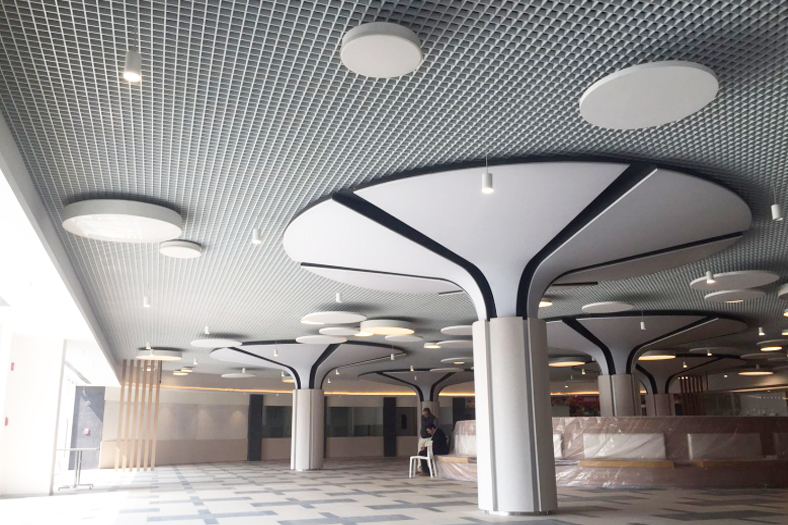Open cell ceilings blend with design aesthetics

Open cell ceiling system provides scalability of sizeable areas while maintaining the mystique of its design. The most intriguing feature about the design is its ability to blend with other architectural designing.
Recommended for public spaces, design facilitates easy airflow management and rapid smoke extraction, required in high traffic areas.
The first impression of an open cell ceiling is always about ceilings in which a repeating pattern of “cube” shapes appear unbroken by any suspension components. So, the finished ceiling will look much like a perfect waffle in appearance. The cube / cell size can be offered starting from 50mm up to 300mm. The standard width of blades is 15 mm, However, some manufacturers can also make it available in 9mm.
There are also options of open cell ceilings which are based on linear pattern. The linear aspect of the product arises from longitudinal blades arranged in parallel. When looking at the ceiling along blades, cross-members are not detected. Simultaneously, a clear, simply structured ceiling appearance is created for long-room projects.
Traditionally, open cell ceiling is being supplied by most of the suppliers in conventional T-grid systems and few of them had developed an integrated carrier as well. However, there are issues of ceilings losing its original position when the panels are removed for maintenance and eventually move the panel out of the square. There are new fixing systems addressing these concerns of the specifiers offering special U-shape carrier system. Each type of open cell ceiling gets an uninterrupted even appearance. But, in new carrier system each individual panel can be hinged down separately.
The type of metal is another consideration since open cell systems are made from both steel and aluminium. Steel being more rigid than aluminium is less likely to incur damage in shipping, handling, or accidents. Moreover, steel is also preferred when it comes to fire parameters. Aluminium, on the other hand, is much lighter and is inherently rust resistant. It’s much easy to handle and may not need rigid suspension system.
For any further information, please visit www.durlum.com
Authored by:
Deependra Singh,
Director,
Durlum India Pvt Ltd
Cookie Consent
We use cookies to personalize your experience. By continuing to visit this website you agree to our Terms & Conditions, Privacy Policy and Cookie Policy.









